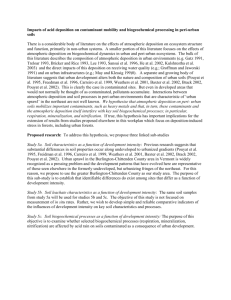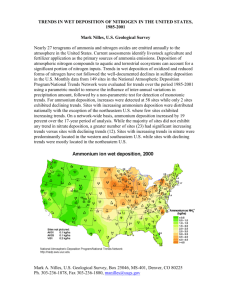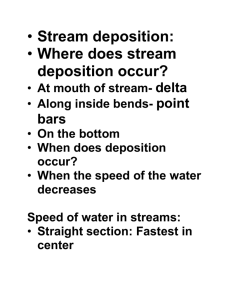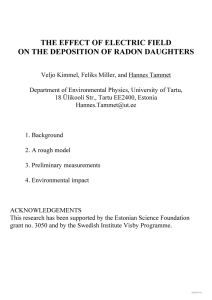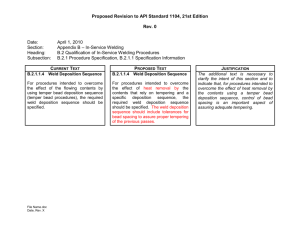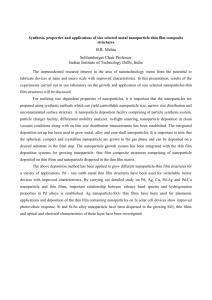Template for Electronic Submission to ACS Journals
advertisement
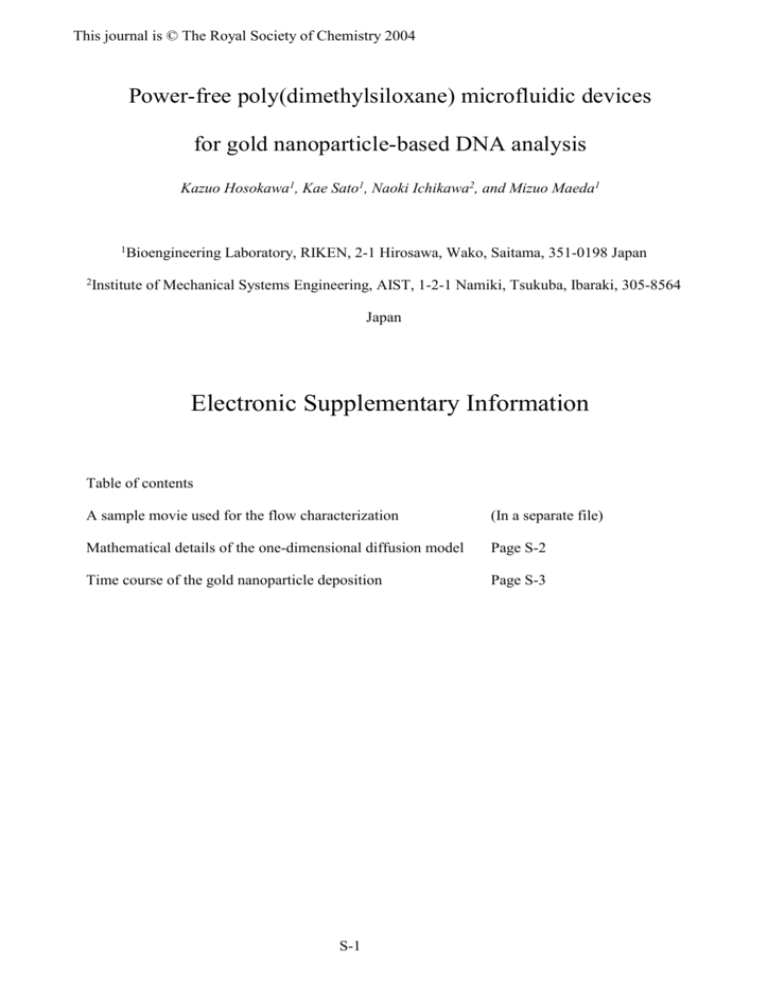
This journal is © The Royal Society of Chemistry 2004 Power-free poly(dimethylsiloxane) microfluidic devices for gold nanoparticle-based DNA analysis Kazuo Hosokawa1, Kae Sato1, Naoki Ichikawa2, and Mizuo Maeda1 1Bioengineering 2Institute Laboratory, RIKEN, 2-1 Hirosawa, Wako, Saitama, 351-0198 Japan of Mechanical Systems Engineering, AIST, 1-2-1 Namiki, Tsukuba, Ibaraki, 305-8564 Japan Electronic Supplementary Information Table of contents A sample movie used for the flow characterization (In a separate file) Mathematical details of the one-dimensional diffusion model Page S-2 Time course of the gold nanoparticle deposition Page S-3 S-1 This journal is © The Royal Society of Chemistry 2004 Mathematical details of the one-dimensional diffusion model Fick’s second law of diffusion: C 2C D 2 . t x (S1) The boundary conditions: C ( x, 0) C0 , l x l , C ( l , t ) C (l , t ) C1 , t 0. (S2) The solution:25 C C1 2C1 C0 ( 1) n n n 0 cos n x 2n 1 2 D exp n 2 t , n . l l 2 (S3) Surface air flux: C FD x x l 2 DC1 C0 2 D exp n 2 t . l l n 0 (S4) Taking the first term of Eq. (S4), we obtain Eq. (1) in the main text. Error is less than 1 % when D t / l2 > 0.24, which corresponds to t > 4.7 min in our system. The total mass index: C C dx 2 1 m C C dx l 1 l l l 0 1 n 0 2 n 2 D exp n 2 t . l (S5) Taking the first term of Eq. (S5), we obtain Eq. (2) in the main text. Error is less than 1 % when D t / l2 > 0.14, which corresponds to t > 2.7 min in our system. S-2 This journal is © The Royal Society of Chemistry 2004 Time course of the gold nanoparticle deposition To evaluate the kinetics of the deposition process, we tracked temporal change of the intensity of the black line (Fig. 6 in the main text) from a video image. Methods Methods were basically the same as described in the main text. However, we used the Hamamatsu video camera instead of the Olympus still camera in this case. The video image was recorded in a personal computer equipped with a video-capturing interface (Library, Himawari PCI/S; Tokyo, Japan), and was analyzed using free image-processing software (ImageJ, http://rsb.info.nih.gov/ij/). Results As described in the main text, a black line appeared at the interface between the streams of Au-P and T1. We chose a 20 pixel square (11 m square) sampling area in the black line, and measured the mean intensity of this area every 1 s. On the other hand, we could not find any deposition for T2. Therefore we determined a sampling area for T2 at the symmetrical position to that for T1. Signal from the second sampling area is substantially a background noise. As shown in Fig. S1, the intensity of the black line sigmoidally changed with the course of time, and was almost saturated after 10 min. Figure S1. Time course of the intensity of the deposition image. Intensity range is 0 to 255 (255 means black). Origin of time is defined as the establishment of flow. S-3



